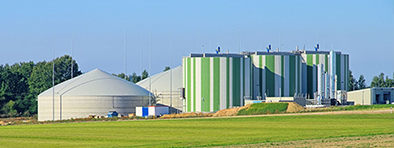A Low Carbon Bioeconomy, it is not a matter of ‘if’, but ‘when’
Around the world, significant steps are being taken to move from today’s fossil based economy to a more sustainable bioeconomy based on biomass. Bioeconomy is coming to the forefront in key policy documents at global scale. In the meantime, Cellulosic Technology which enables to use biomass to produce bio-based products is the essential technology for the transition to a bioeconomy which has multiple drivers:

the need to develop an environmentally,
economically and socially
sustainable global economy

the anticipation that oil, gas, coal and phosphorus
will reach peak production in the not too
distant future and that prices will climb

the desire of many countries to reduce an over
dependency on fossil fuel imports,
so the need for countries to
diversify their energy sources

the global issue of climate change
and the need to reduce atmospheric
greenhouse gases (GHG) emissions

the need to stimulate
regional and rural development
These lucrative markets producing biofuels and biochemicals are only beginning to be exploited.
The opportunities available are endless and exciting, including the use of the cheapest feedstocks, infinitely renewable on the earth, for chemical biorefining, and an alternative solution to waste treatment in parallel.
Transition from First Generation Biofuels to Second Generation
Global consumption for biofuels is projected to reach 57.8 billion gallons by 2020 (Global Industry Analysts, 2015).
The market for biofuels is witnessing steady growth, encouraged by the mounting environmental concerns and driven by regulations mandating the use of fuel blends containing higher biofuel percentage. The demand for fuel blends with ethanol blend in excess to the existing E10 ethanol blend is expected to grow.
However, the sustainability of many first-generation (1G) biofuels – which are produced primarily from food crops such as grains, sugar cane and vegetable oils – has increasingly faced grave concerns over displacement of food-crops, effects on the environment and climate change.
Conversely, the emergence of second-generation (2G) or cellulosic biofuels – which are produced from non-food biomass feedstocks (e.g. wastes, agricultural & forestry residues), thus have significant and positive climate-change effects and food security – is widely seen as a sustainable response to the increasing controversy surrounding the first generation.

Drivers for Second-Generation (Cellulosic) Biofuels
In 2015, countries made commitments toward a more environmentally balanced future through the Sustainable Development Goals (SDGs), and now seek to expand policies for low-carbon development after the agreement reached in Paris at COP21.
In this regard, 2G biofuels are an important tool to be considered in national policies in the coming decades. They are a renewable energy option with great potential to help decarbonize transportation and other systems on the globe. 2G biofuels consequently relate to numerous SDGs and national commitments to limit climate change to tolerable levels.
A 50 percent growth in the 2G biofuels market has been forecast between 2014- 2020 and its value in 2020 has been estimated to amount to US$ 23.9 billion (Allied Market Research, 2014). Navigant Research (2014) forecasts that global biofuel consumption in the road transportation sector will grow from more than 122.6 billion litres per year in 2013 to more than 193.41 billion litres per year in 2022, which will increase demand for 2G biofuels.
The production of cellulosic ethanol is granted price premiums, and low interest rates and a venture capital culture have also been touted for advancing the deployment of 2G biofuels in United States market forward.
Furthermore, the rapid growth of China in the advanced cellulosic ethanol industry with the government’s ambitious target of producing 300 million tons of cellulosic and non-grain based ethanol combined by 2020, as well as strong support to the sector by the National Development Bank in Brazil, all illustrate the multiple supply and demand pull mechanisms, which have given traction to the industry globally.

Multiple Supply and Demand Pull Mechanisms for Cellulosic Biofuels
Ambitious biofuel support policies have recently been adopted in both the United States (with 60 billion litres of second-generation biofuel by 2022) and the European Union (with 10% renewable energy in the transport sector by 2020).
Until 2020 between 52% and 62% of the European predicted gasoline consumption could be substituted by cellulosic ethanol.
This would result in potential greenhouse gas emission savings of 42% to 50%, according to the recent report by Bloomberg New Energy Finance.
Due to the size of the two markets and their considerable biofuel imports, the US and EU mandates could become an important driver for the global development of 2G biofuels, since current IEA analysis sees a shortfall in domestic production in both the US and EU that would need to be met with imports (IEA, 2009b).
These potential demand-pull sources in such major markets could create incentives for a broader basket of developing countries to join the pool of producers.
Energy will be a fundamental part of developing country strategies to meet the specific goals set out by the SDGs, including their actions geared towards tackling climate change in accordance with COP21 and creating new sources of employment compatible with low-carbon development strategies. (UNCTAD, 2015)

Global Concerns Promoting Growth of “Green” Chemistry Markets
The bio-based chemicals and materials industry has reached a tipping point. Recent analysis projects the market share of bio-based chemicals in the global chemical industry to increase from 2% in 2008 to 22% by 2025 (USDA). BCC Research estimates in its new report, the global chemical industry will grow to over $1.5 trillion per year when bio-based and renewable products replace existing products. The global market for renewable chemicals is expected to grow from $51.7 billion in 2015 to $85.6 billion by 2020, with a compound annual growth rate (CAGR) of 10.6% for the period of 2015-2020.
The consumer demand for environmentally friendly products, corporate commitment, and government mandates and support, have now opened new windows of opportunity for bio-based chemicals. In particular, stringent emission regulations across the globe in the wake of the Paris climate agreement are poised to act as a more powerful market driver. In this sense, the production of bio-based chemicals has the potential to significantly reduce GHG emissions of the petrochemical industry, and the downstream users. Life cycle assessment of numerous bio-based chemicals produced from biomass shows that significant GHG reductions could be achieved today, relative to their petroleum-derived equivalent.
Industry is increasingly viewing chemical production from renewable resources as an essential area for investment. Also security of supply is an important driver in bio-based products as well as bio-energy. Biomass possesses this inherent possibility. From a technical point of view, almost all industrial materials made from fossil resources could be substituted by their bio-based counterparts.
Biomass and its enabling technology, cellulosic biomass conversion, are at the heart of this ongoing paradigm shift amid climate change and the advent of bioeconomy.




 COPYRIGHT © 2016 ARKENOL & AKR. ALL RIGHTS RESERVED.
COPYRIGHT © 2016 ARKENOL & AKR. ALL RIGHTS RESERVED.